Astoba (Meyer & Burger) UW 1 machine for sale.
I am now in the process of completing the grey Astoba
I have had three (well, two and a half) of these wonderful machines go through my hands: a Meyer & Burger that has been completely refurbished, slideways ground etc. and two Astoba machines. You can read how I came by these machines here
I found that parts ARE interchangable, alhough some alignments (i.e tailstock) may not be the same in both machines.
The electrics are 380 - 420 Volts 3 phase. you can run the machines from a VFD (I do it with mine), but with some loss in power, since the motors are 2-speed Dahlander motors at 380-400 Volts, not 400/240 volts
You can contact me at ++31-30-293 95 96 or email me at
astoba
(at)
xs4all
dot
nl
the Grey Astoba
One (which I shall call “the Grey Astoba”) was used by Shell, the oil company ,to make brass gears for gasoline (petrol) pumps. When the machine was retired, all the accessories were scrapped. the only thing that came with it was a cross slide and a drawbar.
Note: the original cross slide is no longer with the machine
The only thing with the machine was a P22 drawbar and the banjo with the intermediate gear assembly
However, I am in the process of restoring it to (some part of) her former glory, because I have found a tailstock (or should I say THE tailstock), the overarm with arbours, the drilling attachment and the MT adaptor sleeve!
It seems that the mythical box with accesories wasn't scrapped after all, but ended up at a surplus industrial/machinery dealer in Holland. Tailstock and overarm are clearly marked with the serial number of MY machine - talk about coincidence)
It is a strange hybrid: it has the cast iron column base of the longer bed Model S version, but the bed is that of the shorter model K.
I suppose this column will give a more secure support than the plate steel base of the standard model.
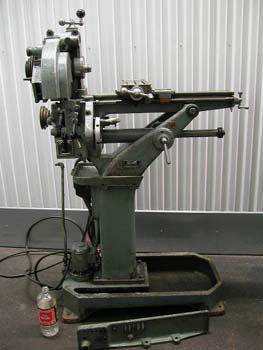

It;s clear that the machine has been used, but not abused; although you can feel grooves in the bed where the carriage has traveled with a fingernail, there are no dings in the bed, and when I took it apart, all the screws came loose easily (put oil in before assembly) and at every oiling point there’s a little plaque with the Shell emblem on it indicating which oil to use. Even before cleaning the machine, everything seemed to move smoothly.
The machine seems to have been serviced at least once: the feedscrew nuts were sliced and a small screw put through them to eliminate backlash (now under 0.08 mm - not bad for a fifty year old machine) and when the gibs are tightened you can feel some friction towards the far ends of the ways, but not dramatically so.
the Green astoba
The other machine, “the Green Astoba” comes from a lock manufacturer in Holland; apparently, it was their first machine. It has almost all of the standard equipment and a few very interesting extras

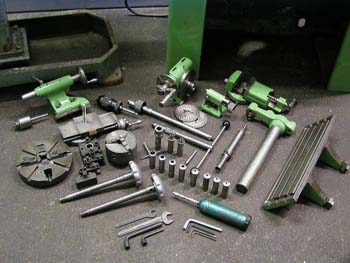
This is an older machine; the rapid feed handwheel is smaller, and the gearbox for the rapid feed is more curved. Also, the lever for the headstock height is an ordinary handle like the cross-feed, instead of an elegant bakelite ball knob. On the Grey Astoba these are the same as the Meyer & Burger.
the machine is on a plate iron (3mm) reinforced base with two shelves. my meyer & burger has three shelves and that's almost enough; I would make an extra shelf.
A Far as condition goes, this machine seems to have suffered more then the Grey Astoba; for instance, the graduated dials feed handles are supposed to be adjustable, but move when the handles are moved. This should be done by a little wire spring that gives friction against the brrel. these wire springs weren't there, the (beautiful matt chrome) graduated dials now have a driled and tapped hole with a hex setscrew and are fixed to the barrel:
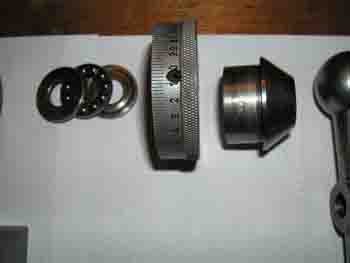
Of course, this is easily fixable by putting the spring back in
Furthermore, the cross feed feedscrew was welded at an unfortunte point:
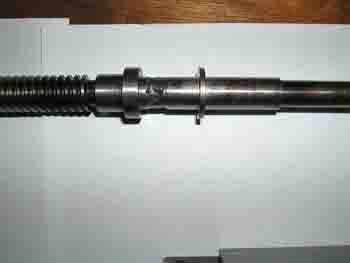
There is a hex bar running below the lead screw. On this bar a long tube and a block should be fitted, so that when the carriage touches the block, the bar knocks out the power feed. Both the block and the tube are missing. Not a big deal, they can be relatively easily made, but they should be there nonetheless.
The Good News
This was the bad news; on the bright side, there are scraping marks al over the bed and the cross slide that can't really be original, and the cross slide has had its gib arranged differently; this suggests a refurbishment and it seems to have been done professionally, probably not by the same person who did the other "repairs"
Standard equipment
Almost all of the standard equipment is there; I left the standard equipment intact, because I want to offer a working machine; what's not there wasn't with the machines. Missing standard equipment - a "driving plate to headstock spindle" for turning between centres, a "driving sleeve for headstock spindle" for arbours and "Splash plate for angle table" is not strictly neccessary, but can be ordered from Brunner or Urben.
The Tailstock:


the cross slide (came with the Grey Astoba), seen here with the Morse 2 adaptor, a dead tailstock centre and a pair of P22 headstock/dividing head centres:

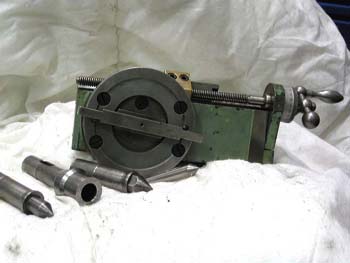
the overarm for horizontal milling and for use with the drilling accessory (with a 16 mm arbour for horizontal milling):
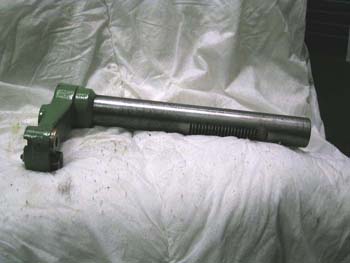
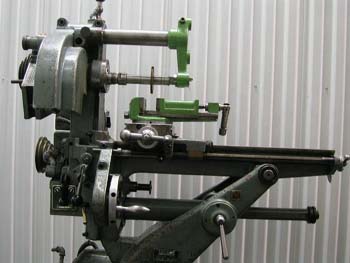
the vertical table for milling and drilling:

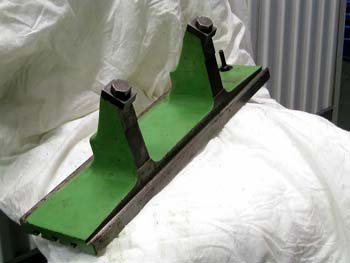
the drilling quill and handle, seen here with one drawbar:
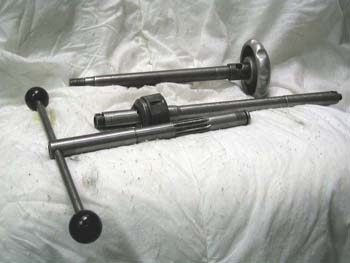
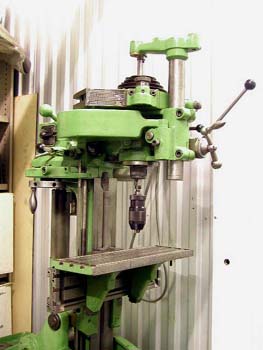
A full set of gears for screwcutting (both metric and inch):
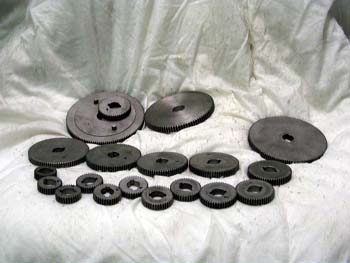
Also included: 2 drill chucks, the Morse 2 adapter, a morse 1 tailstock dead centre, 2 drawtubes, an oiler (remember, this is for oil, NOT GREASE), V-belts, a few spanners and hex keys, copies of the manual in english and german, a copy of the change gear and dividing tables booklet.
Additional equipment
Of course, I kept some additional equipment for myself. But what you will get is still a VERY impressive package; note that this stuff is expensive to buy! a few examples from the 1991 price list (prices in Swiss francs CHF):
face plate 1425 CHF;
vise 1700 CHF;
dividing head 3125 CHF;
collets 37 CHF /pc ;
Of course, this stuff isn't new. But it's in reasonable to good condition, and almost impossible to find in any condition
A vise, very low profile;
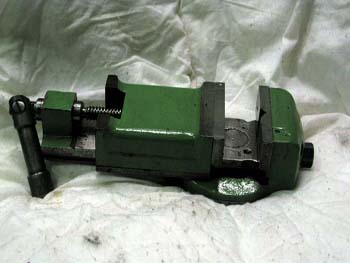
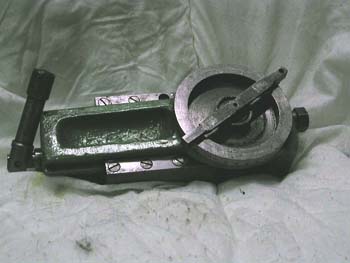
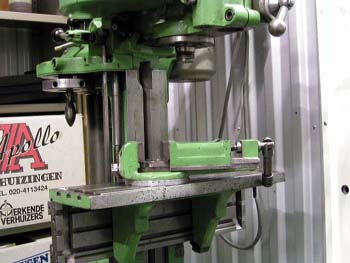
A dividing head with tailstock; everything that fits in the main machine spindle fits in the dividing head - chucks, collets etc., although the tiny drawbar thingy that goes through the back is missing -can be easily made or supplied by Brunner or Urben, with dividing plates Nos. 1 and 2 and one custom made; there's supposed to be a No. 3 but it's not there:

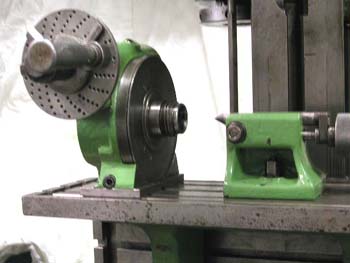
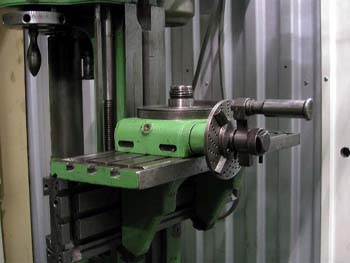
A faceplate/ 4 jaw chuck to fit the main spindle and the dividing head, with removable jaws and 8.5 mm T-slots similar to the cross slide and milling table (sadly, a piece of one of the slots has broken - see photo):
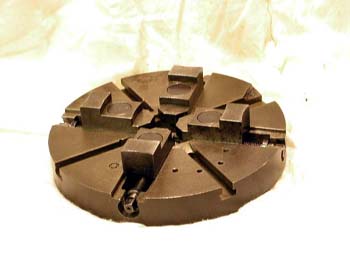
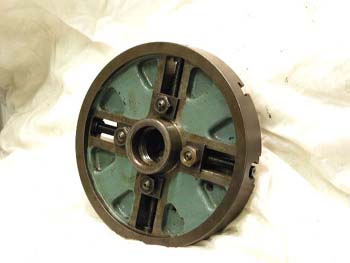
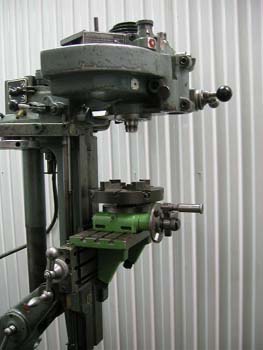
A few P-22 collets. these are still available new in most sizes from Brunner or Urben
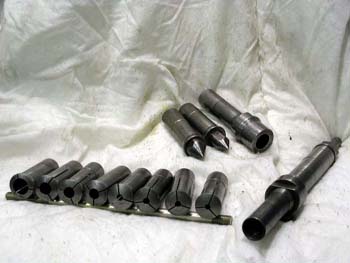
An Algra "Rapidue Original"" toolpost type M with two holders, and one Morse 1 holder:
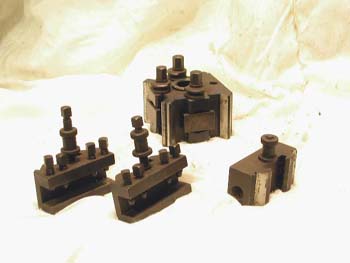
A Rohm 110 mm 3-jaw chuck (seen here with both drill chucks and the 16 mm millin arbour):
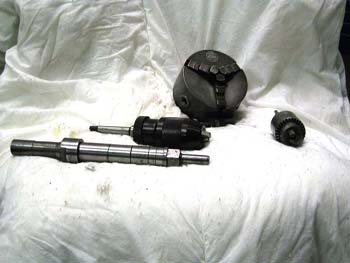
please note
I have tried to describe the machines to the best of my ability, but I can not give any guarantees about the accuracy of either my descriptions or of the machines themselves - mostly because I neither have a degree in engineering nor the equipment to test the geometry of the machines properly.
I started this as a hobby, and although I have learned a lot, there's still a lot I don't know. If there are any problems I will try to help the lucky bastard who buys the machines to solve them, but sales are final etc..




























